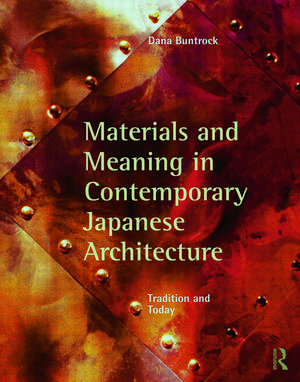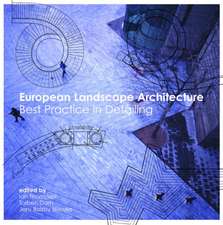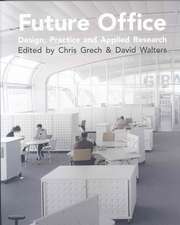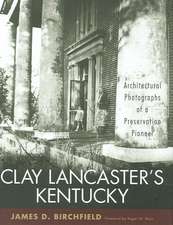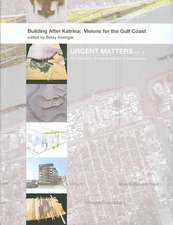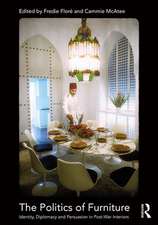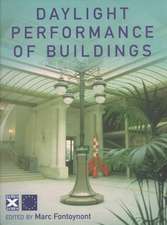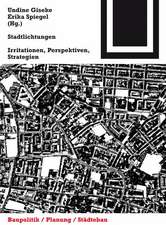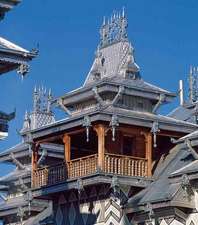Materials and Meaning in Contemporary Japanese Architecture: Tradition and Today
Autor Dana Buntrocken Limba Engleză Paperback – 22 feb 2010
The buildings described in this book illustrate an architecture that embraces uniqueness, expressing unusual stories in the rough outlines of rammed earth and rust, and demonstrating new paths opening up for architectural practice today.
For some, these examples will offer new insight into expressions of tradition in Japanese architecture; for others, this book offers inspiration for their own efforts to assert the unique heritage of other regions around the world. Compelling, insightful and groundbreaking, this book is essential for everyone studying Japanese architecture and anyone trying to invoke narrative and tradition in contemporary design.
Preț: 337.69 lei
Preț vechi: 424.60 lei
-20% Nou
Puncte Express: 507
Preț estimativ în valută:
64.63€ • 66.76$ • 53.78£
64.63€ • 66.76$ • 53.78£
Carte tipărită la comandă
Livrare economică 26 martie-09 aprilie
Preluare comenzi: 021 569.72.76
Specificații
ISBN-13: 9780415778916
ISBN-10: 0415778913
Pagini: 288
Ilustrații: 210 colour illustrations, 10 black & white line drawings
Dimensiuni: 219 x 276 x 18 mm
Greutate: 1.18 kg
Ediția:1
Editura: Taylor & Francis
Colecția Routledge
Locul publicării:Oxford, United Kingdom
ISBN-10: 0415778913
Pagini: 288
Ilustrații: 210 colour illustrations, 10 black & white line drawings
Dimensiuni: 219 x 276 x 18 mm
Greutate: 1.18 kg
Ediția:1
Editura: Taylor & Francis
Colecția Routledge
Locul publicării:Oxford, United Kingdom
Public țintă
Postgraduate and UndergraduateCuprins
Part 1: Black Blood Red to Palest Pink 1. Neolithic Daddy 2. Lamune Hot Springs 3. Kengo Kuma: From PoMo to Paulownia 4. Murai Museum: Subtle Setting for a Shabby Studio 5. Outlandish Amateur, Polished Professional: Comparing the Approaches of Terunobu Fujimori and Kengo Kuma Part 2: Radical Reds 6. Looking Back at Japan’s Radical Reds: Team Zoo Part 3: Reluctant Regionalists 7. Remaking the Landscape of Kotohira Shrine 8. Fumihiko Maki, Ancient Izumo and Oku 9. Jun Aoki’s Aomori Museum of Art 10. Reluctant Reds Conclusion: The Red School: From Deepest Red to Palest Shades of Pink
Recenzii
"Dana Buntrock has written a valuable and long-needed overview of the historic, aesthetic, and spiritual meanings attached to Japanese building materials. By taking this approach, she reveals, for instance, Fumihiko Maki's feel for traditional vernacular materials like cedar, demonstrating that much of contemporary Japanese architecture judiciously juggles past and present. 'Natural materials are garrulous,' architect Hiroshi Naito tells the author. Buntrock offers insights into how the most ancient and 'talky' materials catalyze flexible thinking in the most modern of Japan's architects." -Norman Weinstein, Architectural Record
Notă biografică
Dana Buntrock began her studies of Japanese architecture more than twenty years ago, her first visit a month-long trip that took her to tiny corners of the country to see avant-garde and out-of-the-way works. Her more recent research trips still range in remote pockets of the country, now renting cars, carrying a complex array of cameras and seeking out craftsmen who carry on age-old traditions. The architecture she sees is still often avant-garde, but today there are other approaches evident as well, ones more concerned with underscoring the uniqueness of these remote regions. Buntrock’s first book, Japanese Architecture as a Collaborative Process: Opportunities in a Flexible Construction Culture (E&FN Spon, 2001) looked at professional practice and what it said about a nation’s culture. Her second, Materials and Meaning in Contemporary Japanese Architecture (Routledge, 2010) is concerned with the art and craft of architecture, and how these are used to reflect the particularities of places.
Descriere
An examination of how tradition can be incorporated into contemporary Japanese architecture, considering the work of five Japanese architects: Fumihiko Maki, Terunobu Fujimori, Ryoji Suzuki, Kengo Kuma, and Jun Aoki.
